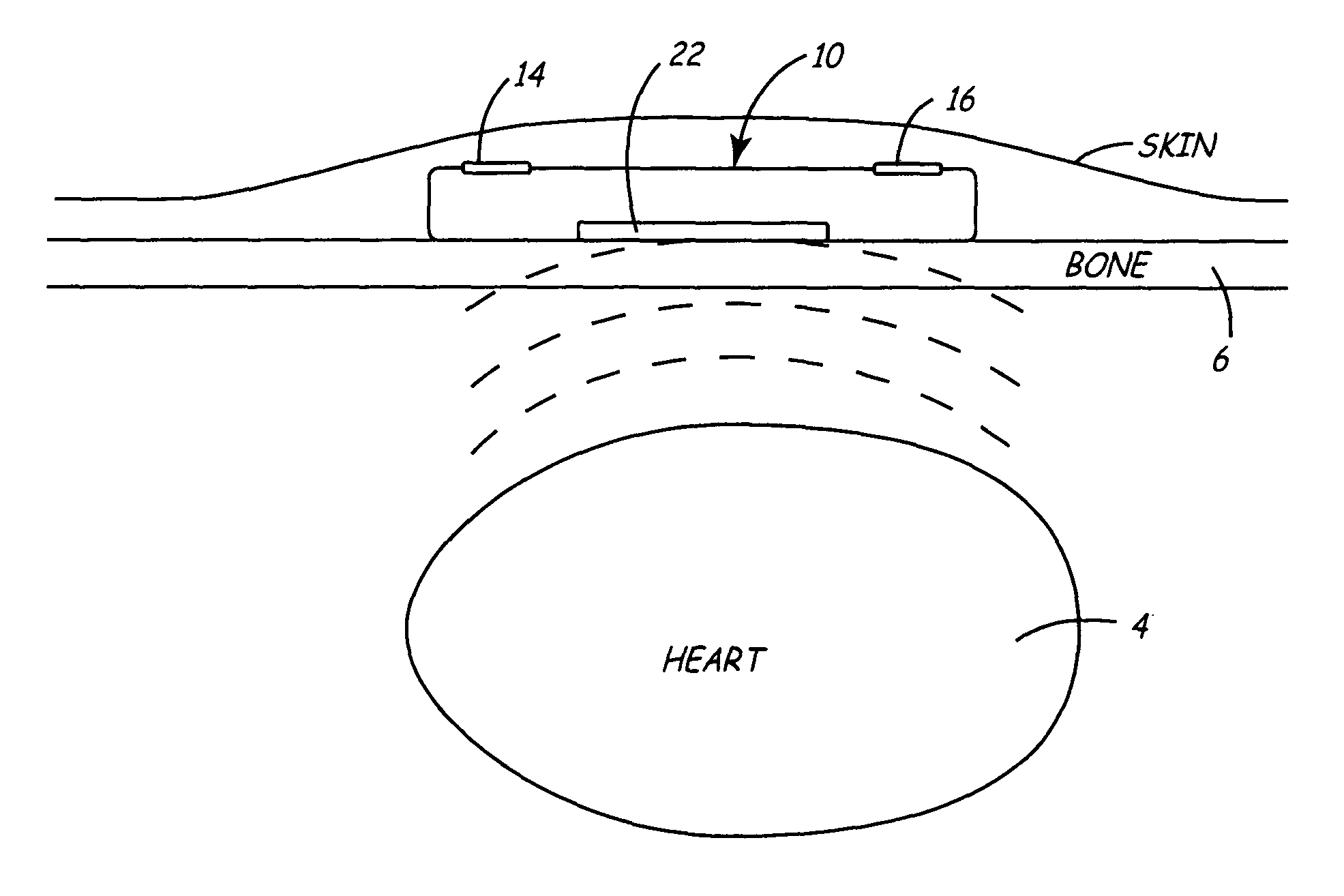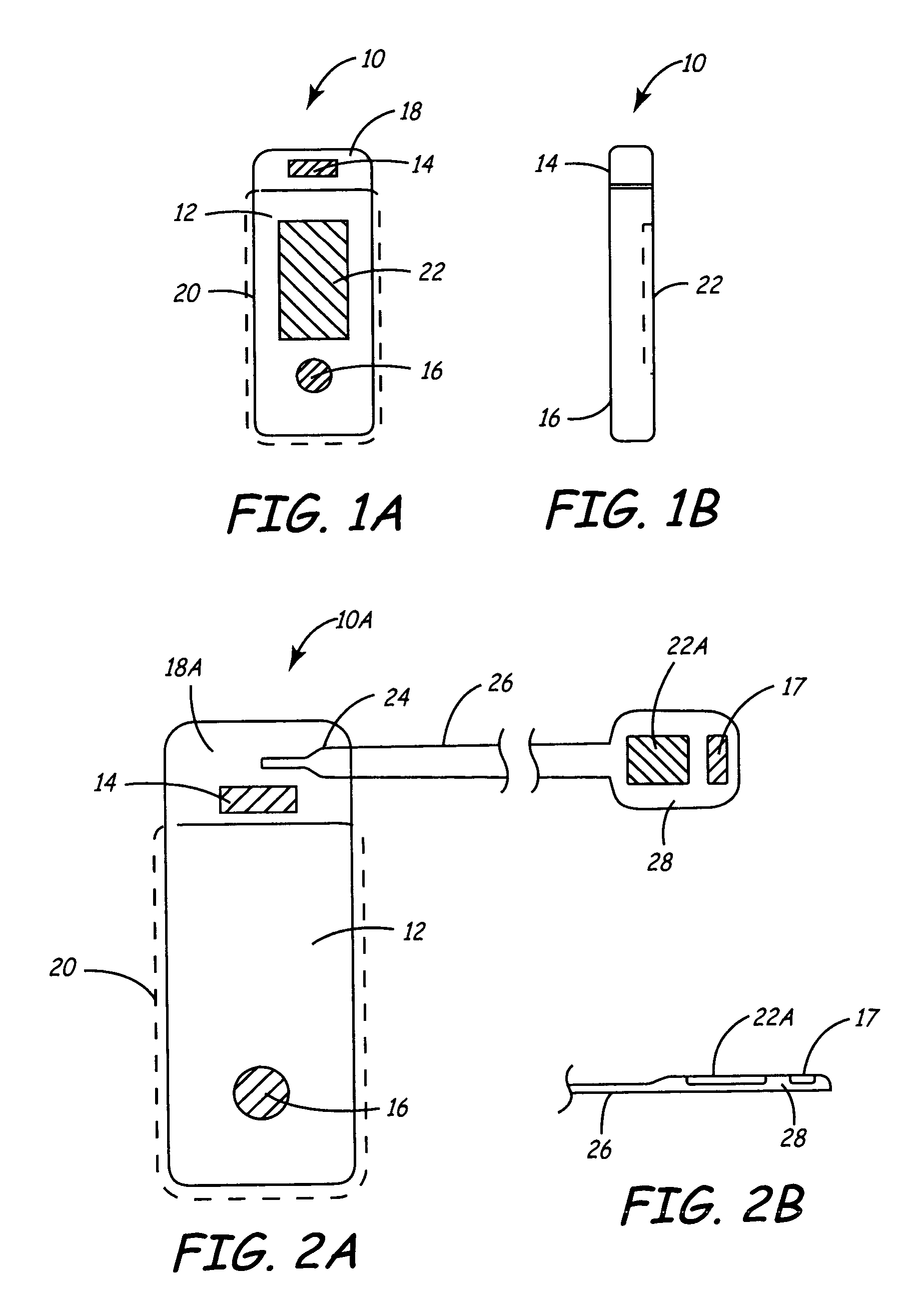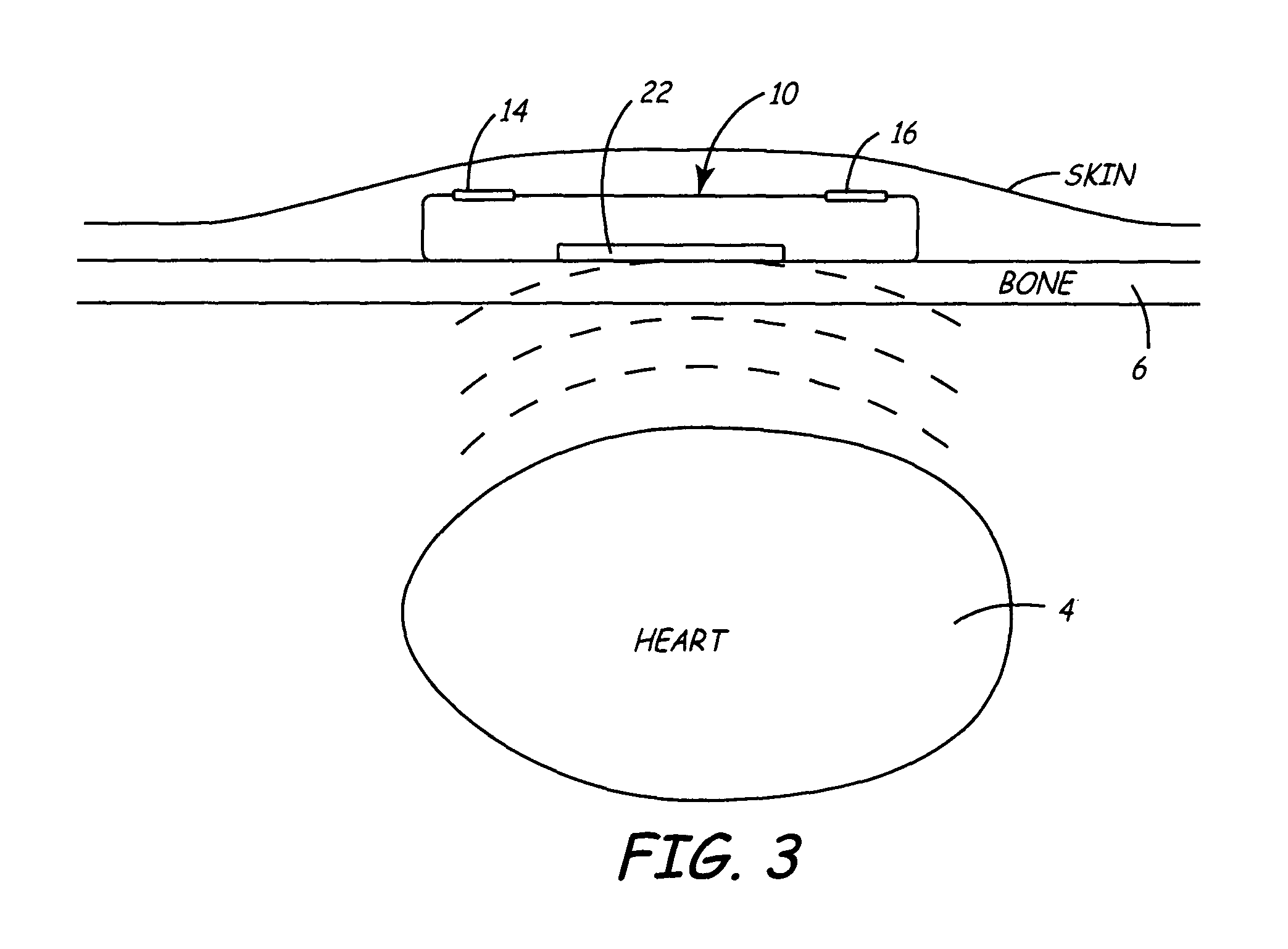Method and apparatus for monitoring heart function in a subcutaneously implanted device
a technology methods, applied in the field of implantable medical devices, can solve the problems of relatively invasive procedures, inability to repeat the same measurement exactly the same way, and so as to reduce the power requirements of the device, improve the efficiency of the device, and improve the effect of the received energy
- Summary
- Abstract
- Description
- Claims
- Application Information
AI Technical Summary
Benefits of technology
Problems solved by technology
Method used
Image
Examples
Embodiment Construction
[0030]FIGS. 1A and 1B illustrate a front and side view of a minimally invasive implantable device 10 for chronically monitoring heart function. The size and shape of device 10 may be generally provided as disclosed in U.S. Pat. No. 5,987,352, issued to Klein et al., incorporated herein by reference in its entirety. The device 10 is provided with a hermetically sealed housing or “can”12 preferably formed from a biocompatible metal such as titanium and closed at one end by a plastic cap member 18. Cap member 18 may be formed of materials similar to those used for pacemaker connector blocks, such as polyurethane or epoxy. Housing 12 is provided with an insulative coating 20, indicated by dashed line, formed from an insulating material, such as a Parylene coating. Device 10 preferably includes at least two electrodes 14 and 16 for sensing a patient's subcutaneous ECG. Electrode 14 is formed from a biocompatible conductive metal such as platinum, iridium, titanium, or alloys thereof. Ele...
PUM
 Login to View More
Login to View More Abstract
Description
Claims
Application Information
 Login to View More
Login to View More - R&D
- Intellectual Property
- Life Sciences
- Materials
- Tech Scout
- Unparalleled Data Quality
- Higher Quality Content
- 60% Fewer Hallucinations
Browse by: Latest US Patents, China's latest patents, Technical Efficacy Thesaurus, Application Domain, Technology Topic, Popular Technical Reports.
© 2025 PatSnap. All rights reserved.Legal|Privacy policy|Modern Slavery Act Transparency Statement|Sitemap|About US| Contact US: help@patsnap.com



